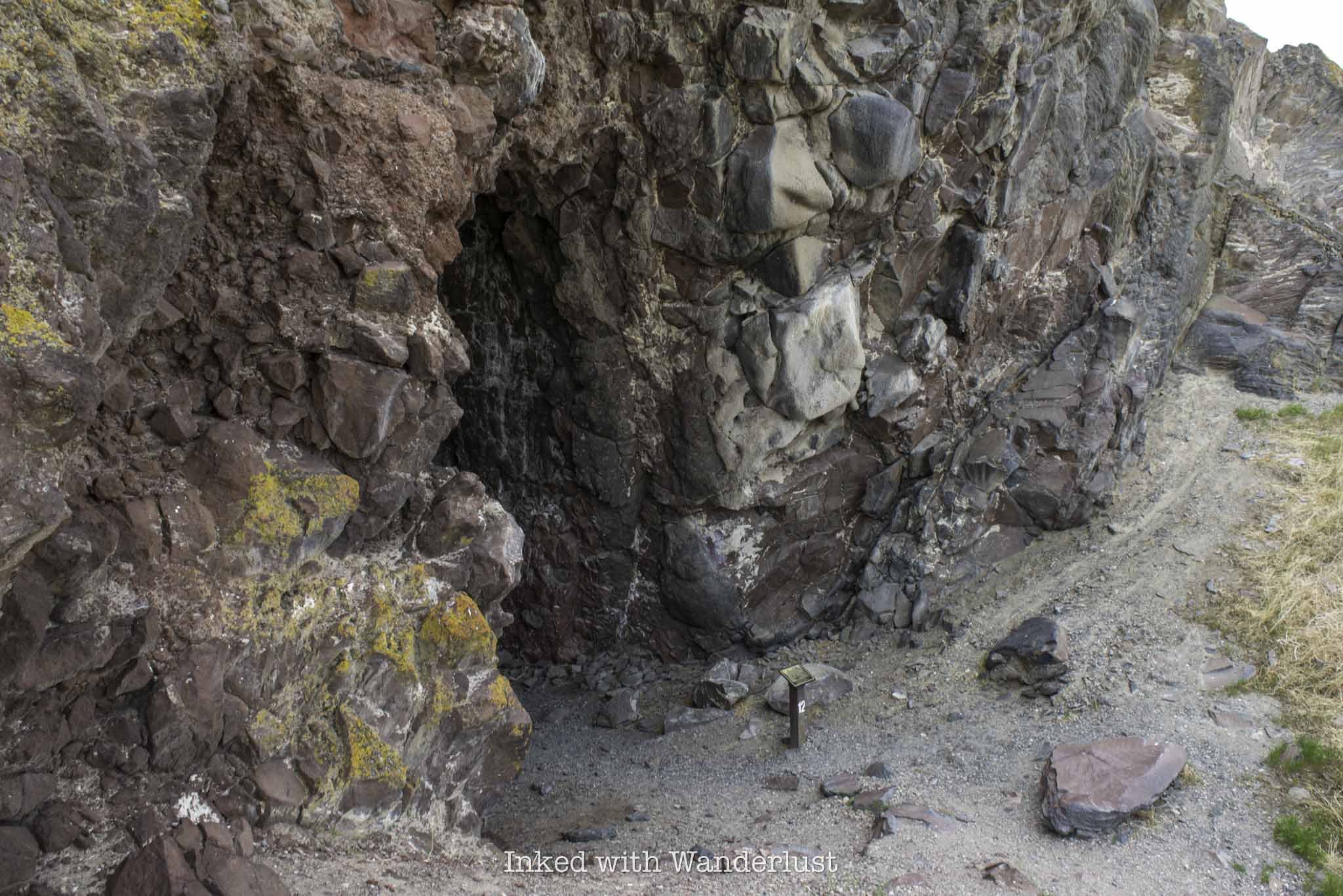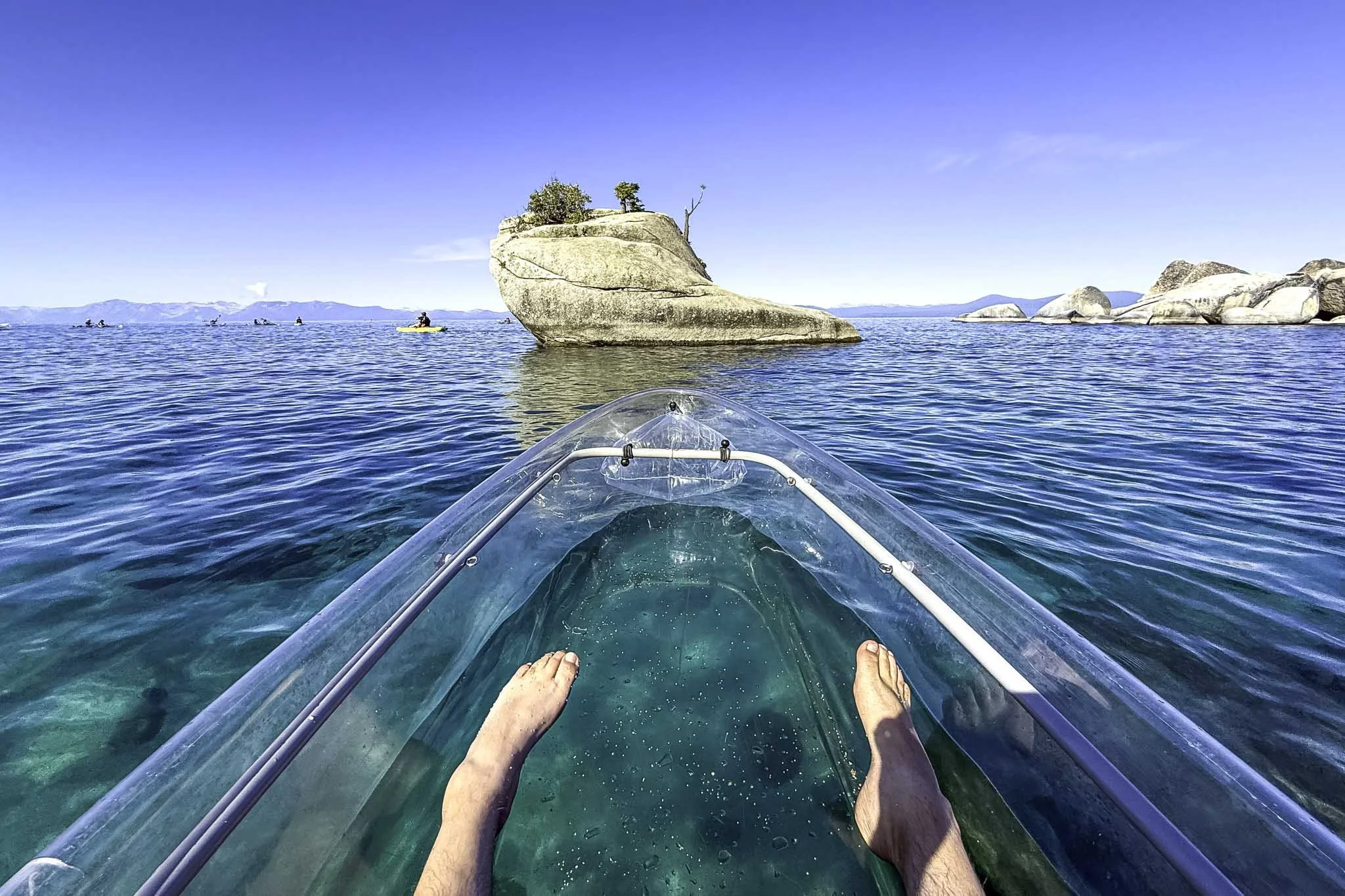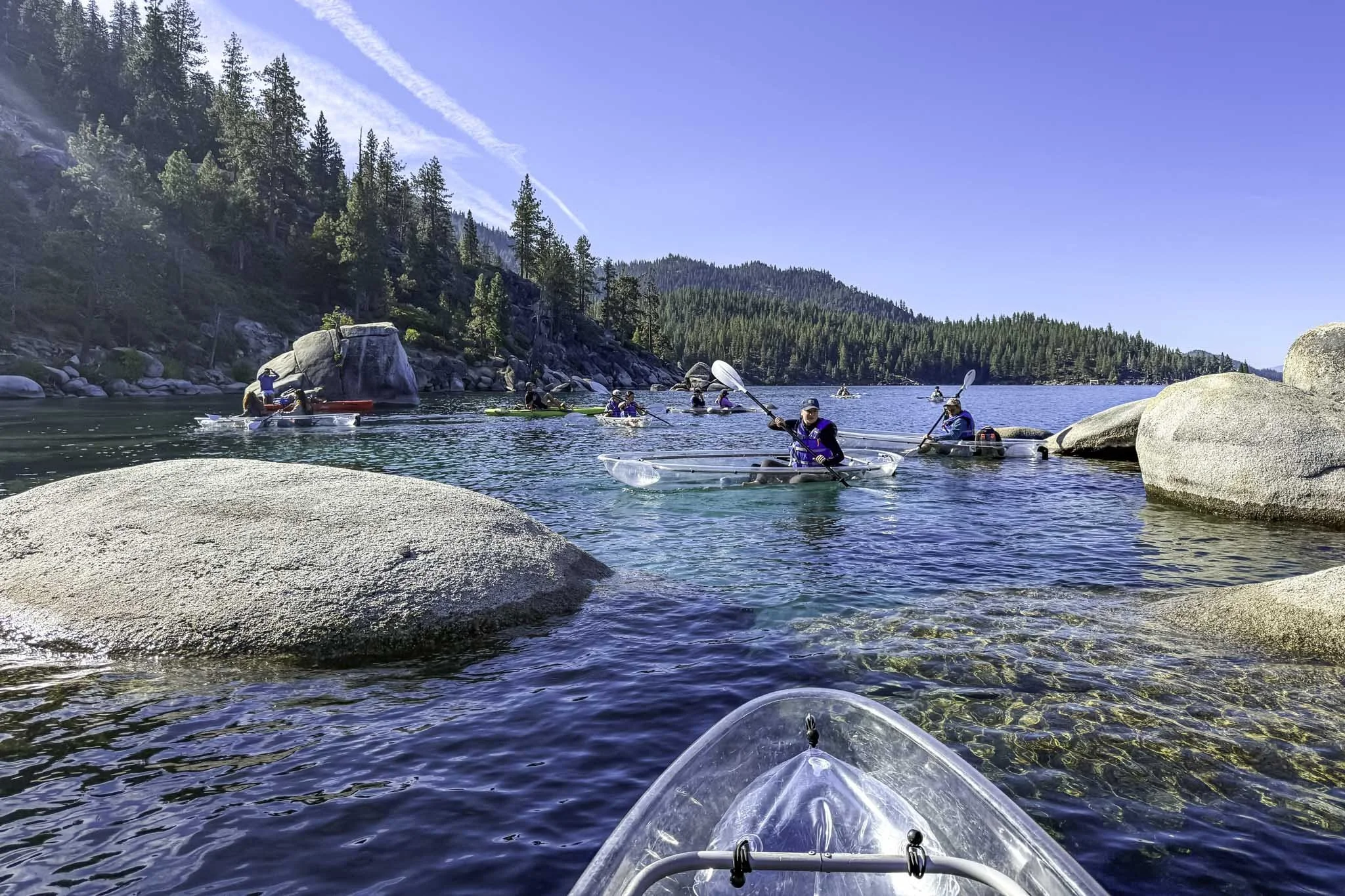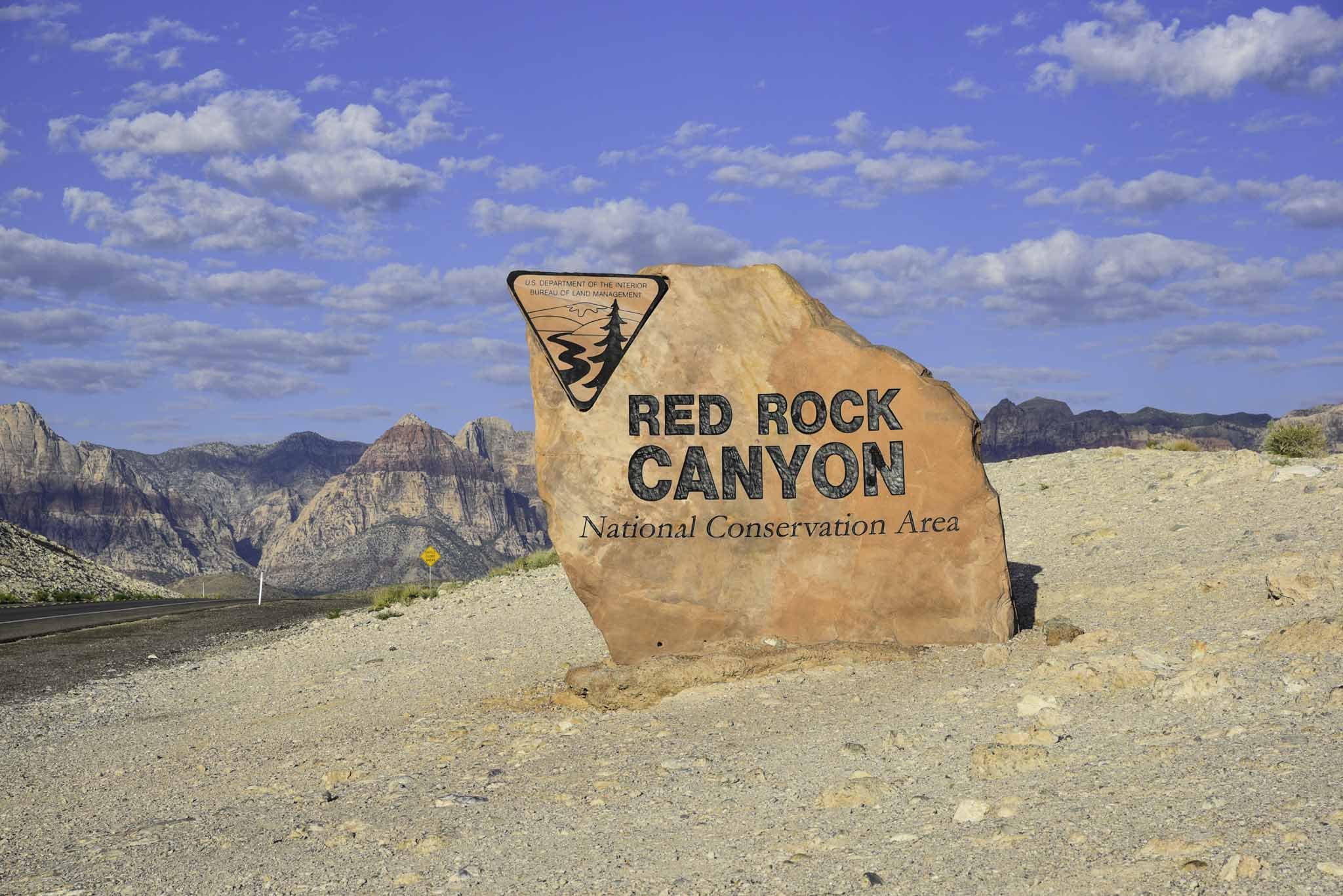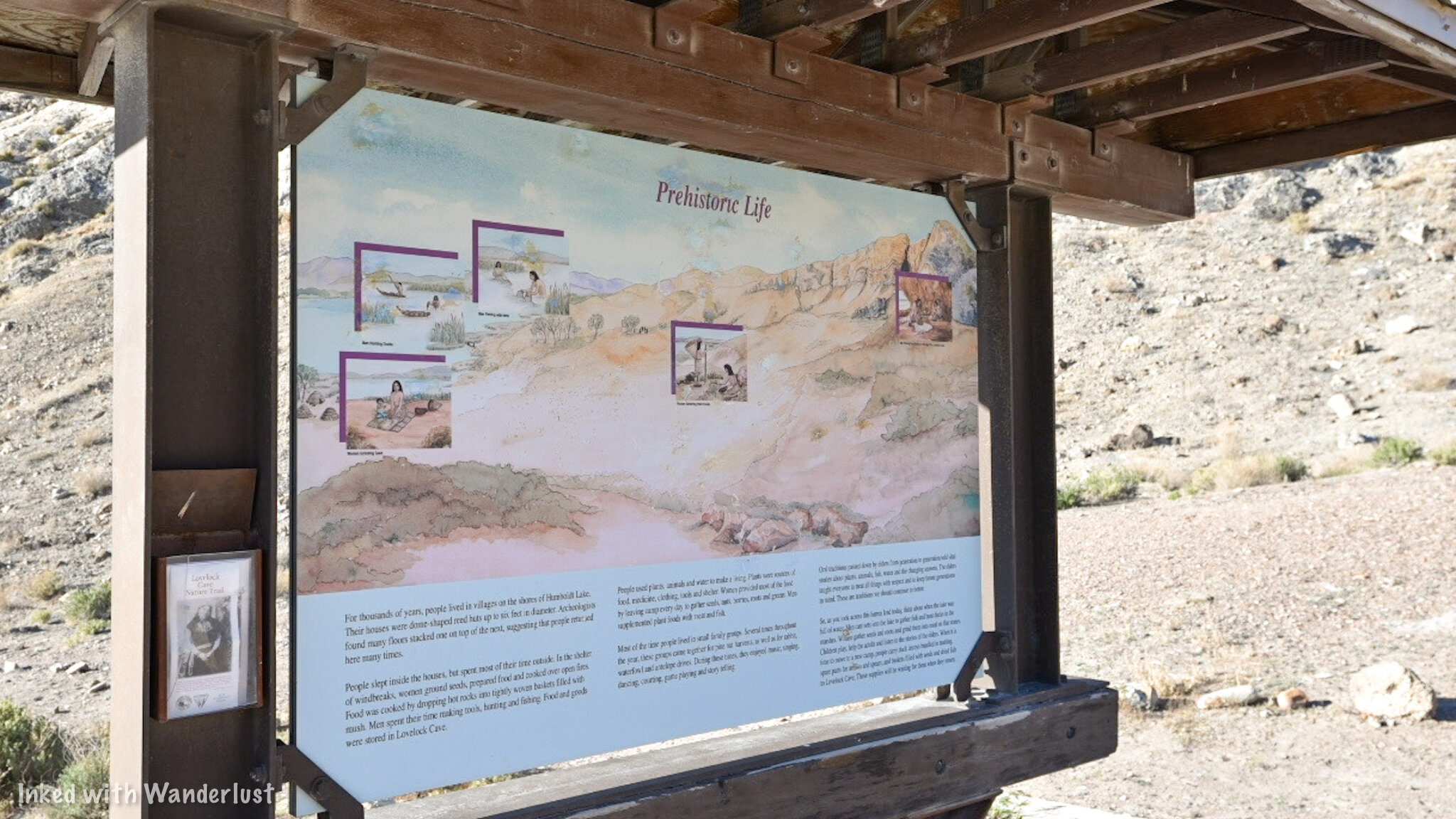How to Visit and Tour Hidden Cave in Fallon
Hidden Cave, located within Grimes Point Archaeological Area on the outskirts of Fallon, is a prehistoric archaeological site containing thousands…
Disclosure: This post contains affiliate links. If you make a purchase through these links, I may earn a small commission at no additional cost to you. I only recommend products or services that I believe will add value to my readers.
Hidden Cave, located within Grimes Point Archaeological Area on the outskirts of Fallon, is a prehistoric archaeological site containing thousands of years of human and geological history.
Pounding waves from ancient Lake Lahontan, a massive body of water in the last ice age, carved and developed the cave some 20,000 years ago. As the lake receded, the cave became exposed and started being used by animals.
Around 3,800 years ago, human activity began in the cave, as the Toi-Ticutta peoples used the cave not as a dwelling, but as a cache site. Pits were created, storing a variety of tools and supplies for safe keeping.
Today, the cave is open to the public for twice-monthly guided tours. During the tour, your guide educates you on the cave and area, taking you along a trail pointing out petroglyphs, additional caves, tufa formations and more.
Trail Stats
Location: Fallon, Nevada
Fee: None
Open: Trail is open year-round. Hidden Cave only accessible via guided tour, every 2nd and 4th Saturday of each month
Family Friendly: Yes
Cell Service: Good (Verizon)
Restroom: At the visitor center and trailhead
Parking: Large dirt/gravel lot
EV Stations: None
Difficulty: Easy to moderate
Popularity: Low to moderate
Mileage: 0.7 mile loop (not counting optional spur trails)
Time: Two hour tour
Elevation: 6,700 feet
Condition: Well maintained and easy to follow
Features: Multiple prehistoric caves, hundreds of tufa formations and ancient petroglyphs
Best Viewed: Spring or fall
Pets: Allowed on trail, but not inside Hidden Cave
Drones: Allowed in area
Hazards: Potential rattlesnake encounters, head injuries in the cave and exposed trail
My Visit(s): April 2025
Churchill County Museum - Hidden Cave Tour
All public tours to Hidden Cave begin at the Churchill County Museum in downtown Fallon. Tours are guided by a Bureau of Land Management (BLM) representative on the 2nd and 4th Saturday of each month, with the exception for holiday weekends. You can view current dates here.
You’ll want to arrive by 9:15am, as orientation begins promptly at 9:30am. There is no fee to enter the museum or to take the tour, nor are there any parking fees. The address for the museum is:
1050 South Main Street, Fallon, Nevada
If you can, I recommend arriving to the museum even early than 9:15 to give you more time to explore the it. For being a small museum, it’s packed with exhibits of Native American and pioneer history.
I believe they open at 9am on tour days, which gives you time to check out the exhibits (though not enough to see it all). If you don’t arrive early, consider heading back to the museum after the Hidden Cave tour.
When orientation begins, your tour guide will make their introduction and give you a brief breakdown of what to expect on the tour and provide some historic context of what you’ll see.
Then, you’ll watch a roughly 20-minute video which dives deeper into the Native American history of the cave, how it formed and what archeologists eventually discovered in the cave.
At the conclusion of the video, your guide will answer any final questions from the group and provide everyone time to use the restroom. You’ll then return to your vehicle and caravan to the cave.
Hidden Cave Trail
You can follow your tour guide there or simply punch “Hidden Cave” into your GPS of choice and go. The cave is about 15-minutes from the museum. When you turn left onto the dirt road, keep left at the junction. Going right will take you to Grimes Point.
The dirt/gravel road is riddled with potholes, but my sedan made it through just fine. Just take it slow if you need to. You’ll soon arrive at the trailhead. There, you’ll find a restroom (vaulted) and informational signs.
Once everyone in the group has arrived, your guide will again explain what to expect. To avoid the rocky portion of the trail, you can opt to head up the direct path to the cave and wait for the rest of the group there.
However, if you can, I recommend doing the entire trail. It is rocky, but only at certain points and is easily navigable, in my opinion. You’ll go right at the trailhead and the first feature you’ll see are petroglyphs on multiple rocks.
Petroglyphs
Your guide will explain the history of petroglyphs in the area and what ancient Indians may have been trying to convey with them. You’ll find many more at nearby Grimes Point, which I highly suggest stopping there after the tour.
From here, you’ll continue up the trail. Feel free to take your time and stop to take as many pictures as you want. The tour guide was good about waiting for everyone to get the next point before speaking.
Picnic Cave
The next stop on the Hidden Cave trail is another cave called Picnic Cave. This cave isn’t closed off like Hidden Cave is and you can visit it anytime you like, with or without a tour guide.
The best feature of this cave is the large amount of tufa formations around the entrance and roof. If you don’t know, tufa is a porous sedimentary rock composed of calcium carbonate or silica, and is formed under water.
In this case, the tufa in this area formed when Lake Lahontan covered this entire region. Keep in mind, Hidden Cave is at 6,700 feet elevation. Picnic Cave isn’t much lower. Literally all of this was submerged at one point.
Another great example of tufa formations is a couple hours away in Lee Vining, California, at the Mono Lake Tufa Natural Reserve. However, the examples here are more in abundance, covering nearly the entire cliffs and mountainsides around you.
A Quick Rest with a Great View
After Picnic Cave, it’ll be an uphill slog until you reach the entrance to Hidden Cave. Due to this, the tour guide will stop the group a couple times to allow time for rest. At the second stop, you’ll have a commanding view of what was once marsh land.
Take a look around you when you’re up here. You’re at around 6,500 feet elevation at this point. You’ll notice the cliffs above you that are easily 7,000 feet and up with more tufa formations on them.
Remember, tufa only forms under water with the right amount of minerals. Photos can’t do it justice, but getting that perspective from here really shows just how massive and deep Lake Lahontan was.
Hidden Cave
After a brief rest, the group will continue up another incline until you reach the entrance to Hidden Cave. The entrance is small, requiring all but small children to crotch down to get through it.
For context, I’m 5’9 and I had get down pretty low to get in. For anyone six feet or taller, I would imagine this being challenging for them. When you get through the entrance, keep your head down for a few feet as there are low-hanging rocks.
Once you get past the first few feet, you’ll arrive to an open chamber on a wooden boardwalk. As you can see in the photo above, you’ll be able to fully stand once inside, no matter your height.
In the video at the museum, it was stated you could fit two NBA-sized courts in the cave and have room for spectators on the side. I’m not so convinced of that, as it didn’t appear to be that roomy. It was still impressive, though.
The amount of walkable space on the boardwalks is small and you cannot walk on the cave floor at all. So if you’re part of large or even semi-large group (like I was), it can be tough to navigate.
Once folks start leaving, though, you’ll have more elbow room to explore. My tour guide said he would stay for as long as anyone wanted to explore, so there was no rush. I simply waited for most of the group to leave to look around.
On the walls in the lower portion of the cave are markers. Some mark the age of each layer of rock you’re looking at and others indicate where certain animal fossils were found and their age.
Spend some time looking at these markers and getting photos, then make your way out of the cave. The entrance is also the exit. From here, the tour is over and you’re free to explore on your own.
Side Quest - Burnt Cave
When the tour was over, our guide tipped me off to another cave to check out that also had pictographs on the walls. To get there, head back down the trail until you reach the junction you see in the photo above.
Going right (where you just came from) will take you back to Hidden Cave. Take the trail on the left. You’ll start winding your way back down the mountain and see more examples of tufa formations and dramatic cliffs on the way.
After about a quarter-mile, at trail marker twelve, you’ll see a series of wooden steps leading up an incline. When you get to the top, Burnt Cave will come into view. It’s more an indent into the mountain than a cave, but still cool to see.
This cave was excavated in 1971. Looking at the cave, you’ll notice the red pictographs that were unfortunately partially covered by modern vandalism. By the way, Hidden Cave is locked behind a gate now for that very reason. It was also vandalized back in 2014.
Go a little further up the trail to the other side of Burnt Cave to see even more tufa formations. The ones over here are even crazier than those at Picnic Cave. One almost looks like a mushroom-like formation.
The trail keeps going from here, but I didn’t go any further. To get back to your vehicle, simply head back down the trail. You won’t need to climb back up to Hidden Cave as the trail splits again towards the parking lot. Take a right at the junction to get there.
From here, I recommend driving down the road to Grimes Point and taking time to explore that. The amount of petroglyphs along that short trail is mind boggling. For places to eat, I recommend Pho, The Slanted Porch, and Middlegate Station.
If you’re on a road trip heading towards Interstate-80 east, you can make another stop at Lovelock Cave (near Lovelock) and Thunder Mountain Monument in Imlay. Heading towards Yerington? Consider stopping at Fort Churchill or hike the Wilson Canyon Loop.
JEREMIAH 29:11
How To Visit The Historic Lovelock Cave
Nestled within the Humbolt Mountain range and located 20 miles outside the small Nevada town of Lovelock, the Lovelock Cave is a small, but significally historic landmark…
Nestled within the Humbolt Mountain range and located 20 miles outside the small Nevada town of Lovelock, the Lovelock Cave is a small, but significally historic landmark. It’s an easy, straight-forward drive along the Backcountry Byway and once there, it’s a quick hike to the cave entrance from the parking lot.
As stated above, it is small. This is not the kind of cave where you’ll be able to go from room to room deep into the earth. It’s a small entrance leading to a viewing deck inside an area barely bigger than a modern day studio apartment. Don’t let this stop you, though. The historical significance of the cave more than makes up for its lack of size.
Some 22,000 years ago, Lake Lahontan covered this entire area. As water levels began to recede, wave action started to interact with the limestone, resulting in little pocket caves like this one. Lovelock Cave is just one of many in the area that came to be because of Lahontan. Hidden Cave near Fallon is another example.
In later years, Northern Paiute Indians would utilize this cave for storage and shelter between the timeframe of 2,000 B.C and 1,000 A.D and it would go undiscovered until 1912 when bat guano miners found it and began operations. Shortly after, archeological digs would commence and regularly occur for around 60 years, resulting in the discovery of thousands of artifacts and human remains.
Read on below as we give you a detailed summary on how you can make your way out here and see it for yourself. In the second half of the article, we will briefly cover the legend of the cannibalistic giants that lived here as well as the discovery of the oldest known duck decoys in the world. Enjoy!
Directions
Your journey to the cave begins and ends in Lovelock, NV. Thankfully, it’s easy to get there as your journey begins almost as soon as you exit the freeway. Whether you’re coming from the direction of Winnemucca or Reno, these are the easiest directions to follow:
You’ll take exit #106 towards Downtown.
As you’re taking the exit, you’ll notice a McDonalds.
If you’re coming from Winnemucca, you’ll turn right on Main then left on Amherst (just before McDonalds). If you’re coming from Reno, you’ll turn left on Main, go under the overpass, and left on Amherst.
This road will eventually turn into S. Meridian and becomes a well maintained dirt road as you pass through a beautiful agricultural area.
You’ll stay on this road until you reach Derby road at a two-way intersection. You will go left here.
You’ll cross over the Humbolt River and shortly after, come to a point where the road splits in three directions (as pictured below). You’ll want to continue to the right.
Continue going straight until the road terminates at the parking lot.
Even though it is fairly straight forward, you may feel a little lost at times (we did). Just keep an eye out for those “Lovelock Cave Byway” signs. They’re dotted along the entire stretch of this drive. If you haven’t seen one in a while, you may want to turn around.
Pictured above is a beautiful section of the Humbolt River we ran into along the byway. This view was on our left shortly after turning on Derby. Pictured below is where the road splits into three directions shortly after the river crossing. You’ll turn right to continue towards the cave (though we were curious as to what the other roads led to. If you happen to know, please let us know in the comments).
Between here and the cave, you’ll get amazing views of the Humbolt Mountains on your left and the Humboldt State Wildlife Management Area on your right. We observed many species of birds in this area and even spotted a Rattlesnake sun-bathing in the middle of the road. If you’re into birding, you would do well here.
The road you’ll be on is well maintained with only a few parts that get a bit rough for those driving a compact vehicle. For clarity, our Chevy Cruze made it just fine (though there were a few times we had to slow down due to rough bumps in the road). If you have a truck or jeep, you’ll have no issues.
The road will start to go left and up towards the cave and soon, you’ll see the entrance sign and the parking lot ahead of you. The lot is a decent size that could easily accommodate a few dozen or so creatively parked vehicles. There is also a covered picnic table and one restroom. Fair warning, the restroom isn’t very well maintained (better than nothing, though).
The Nature Trail
At the trailhead, you’ll find an informative board describing the history of the cave and the area as a whole. You’ll find the start of the trail just behind here. If you wanted to complete the trail proper (and you should) you’ll start by heading upwards. If you just want to get to the cave, head left.
The nature trail is short, coming in a just over half a mile for the whole loop. In the beginning there is a bit of an uphill climb but it’s on gentle switchbacks and doesn’t require a whole lot of effort. If you took a brochure along with you (at the trailhead), it’ll describe the mountains, plants, and other features as you go.
If you’re on the trail proper, it’ll take you up, over, and around the cave before dropping you off at the entrance. Just before this, you’ll come to another informative board with an expansive view of what was once ancient Lake Lahontan (now Humbolt Sink). The board details the plant, animal, and fish life that once called this area home.
From here, you’ll continue left on the trail until you reach the entrance to the cave. You’ll go down a little bit before working your way back up. This section of the trail does have sheer drop offs on your right, so be sure to watch your footing. Once you get to the entrance, you will see a few spur trails. There’s no right or wrong here. Just pick one and go up.
When you arrive at the entrance, you’ll see what we mean by how small it is. In fact, it used to be MUCH wider, but an earthquake caused a large rock to collapse into the mouth of the cave, leaving the tiny entrance we have today. You can still see how large it was by looking to the far right of the entrance.
Lovelock Cave
From here, simply head into the cave. Watch your footing as you descend as it’s a rocky and uneven surface. In front of you, you’ll see a wooden deck. This is where you can enjoy the cave from. This deck was installed around 10 years ago to help maintain the integrity of the cave. The BLM does ask that you stay on the deck as archeological digs do still occur here from time to time.
In the photo below, you will see a brightly lit photo of the viewing deck. I used my camera’s flash to attain this photo. It is NOT this bright inside. It isn’t pitch black or anything as you are able to see where you’re going, but it is much darker than what this photo shows.
All around you, you’ll see burn marks at both the entrance of the cave as well as nearly the entire interior. It is believed that this was due to fires being set by Native Americans for warmth, cooking food, etc. There’s also the legend of Natives setting fire to the entrance of the cave to “smoke out” cannibalistic giants that once lived in this area (more on that later).
There’s a lower portion of the deck to the right that takes you slightly further into the cave. It’s much darker on this side as it’s further from the entrance. Seeing a bat or two is a possibility. The brochure we had stated bats were rare in this cave these days but during our visit, we saw two flying around.
From either side of the deck, you can see the areas where both bat guano miners and archeologists dug through. Guano mining took place in the early 1900’s while archeology digs began later and still occur from time to time. Many historical items were discovered here including multiple bones, mummified remains (unconfirmed), weapons, tools, duck decoys (oldest known in the world), clothing, and other artifacts.
Per my research, a total of 10,000 human remains and cultural artifacts have been discovered in this small cave. Prior to the mining and digging, the floor of the cave was much higher than it is today, specifically the left side (which was where most of the digging took place).
Once you’re done enjoying the cave, simply exit and head to the left back on the loop trail to complete your journey. On this section of the trail, you’ll get more expansive views of the Humbolt Sink and see up close the amazing limestone rock formations that make up the exterior. If you’re a rock nerd (like me) you’ll enjoy it.
From here, you just keep going straight until the trail spits you back out to the parking lot. You’re total milage on the trail will be around 6/10’s of a mile and with time exploring the interior of the cave, it shouldn’t take you more than an hour or two to complete.
Legend of the Giants
Now that we’ve gotten the “how to” part of this article out of the way, lets move on to some history. We have heard the legends and rumors surrounding what was and wasn’t found inside this cave. One of those legends pertains to the red-haired, cannibalistic giants that allegedly lived here while ancient Lake Lahontan was still present.
Native Paiutes described these giants (called, “Si-Te-Cah” and translates to, “tule eaters”) as upwards of 12-feet tall with reddish-brown hair all over their bodies and faces (think modern-day Bigfoot descriptions). They would sail across the sink to tribe villages, kidnap native women and children, and would take them back to this cave (and others) to be eaten.
Sick of their people being kidnapped and eaten (understandably), multiple tribes banded together with the purpose of killing these giants once and for all. So they chased them into the cave and after refusing to come out and fight, they set fire to the entrance of the cave. Some of the giants stayed inside, falling victim to burns and smoke inhalation. Others ran out and died after being hit with a hail of arrows.
It is said that many bones were discovered in the cave, some being split down the middle with the bone marrow extracted (which is probably something a giant cannibal would do). Furthermore, legend has it that mummified remains of these giants were found here. I was unable to find anything conclusive that confirmed the existence of these remains, so take it for what it’s worth.
The Duck Decoys
Among the confirmed artifacts unearthed here, the most known has to be the duck decoys. These decoys date back to between 400 B.C - 100 A.D. They’re made of bundled Tule (a desert plant which grows in marshy wetlands), are painted, and have actual Duck feathers still attached. In all, 11 were found with 8 being complete and 3 being unfinished.
These decoys have the distinction of being the oldest known in the world. They went undiscovered and untouched inside the cave for over 2,000 years. It’s truly amazing. Fittingly, they’re currently on display at the National Museum of the American Indian in Washington, D.C.
Conclusion
It is our hope that you found this article helpful in planning your travels. If you enjoyed it, please support our website by sharing this article with your friends and family on Pinterest, Facebook, or your favorite social media channel.
You can further show your support by staying on and reading one or more of the related articles above and by subscribing to our newsletter. Thank you and safe travels!






















